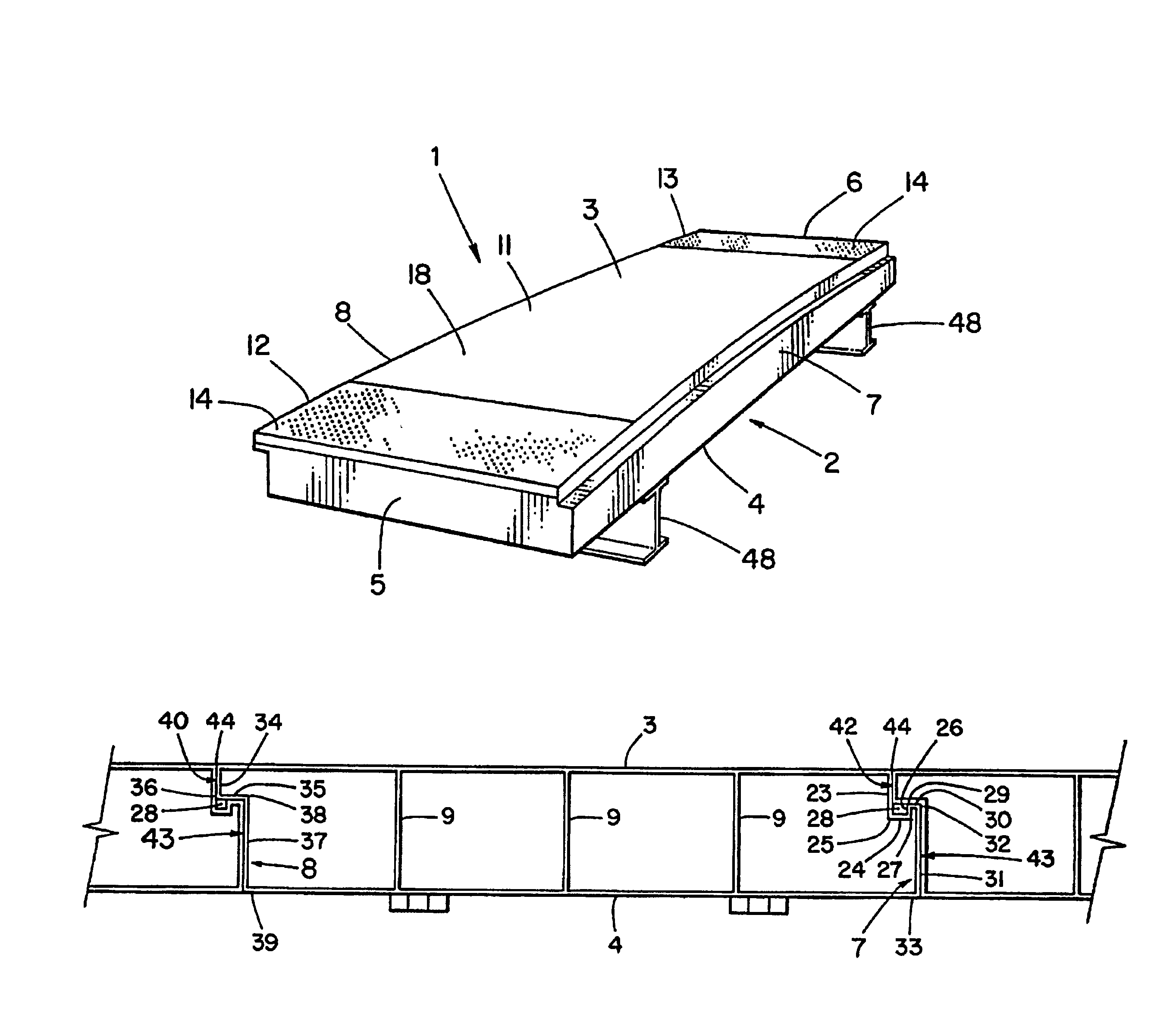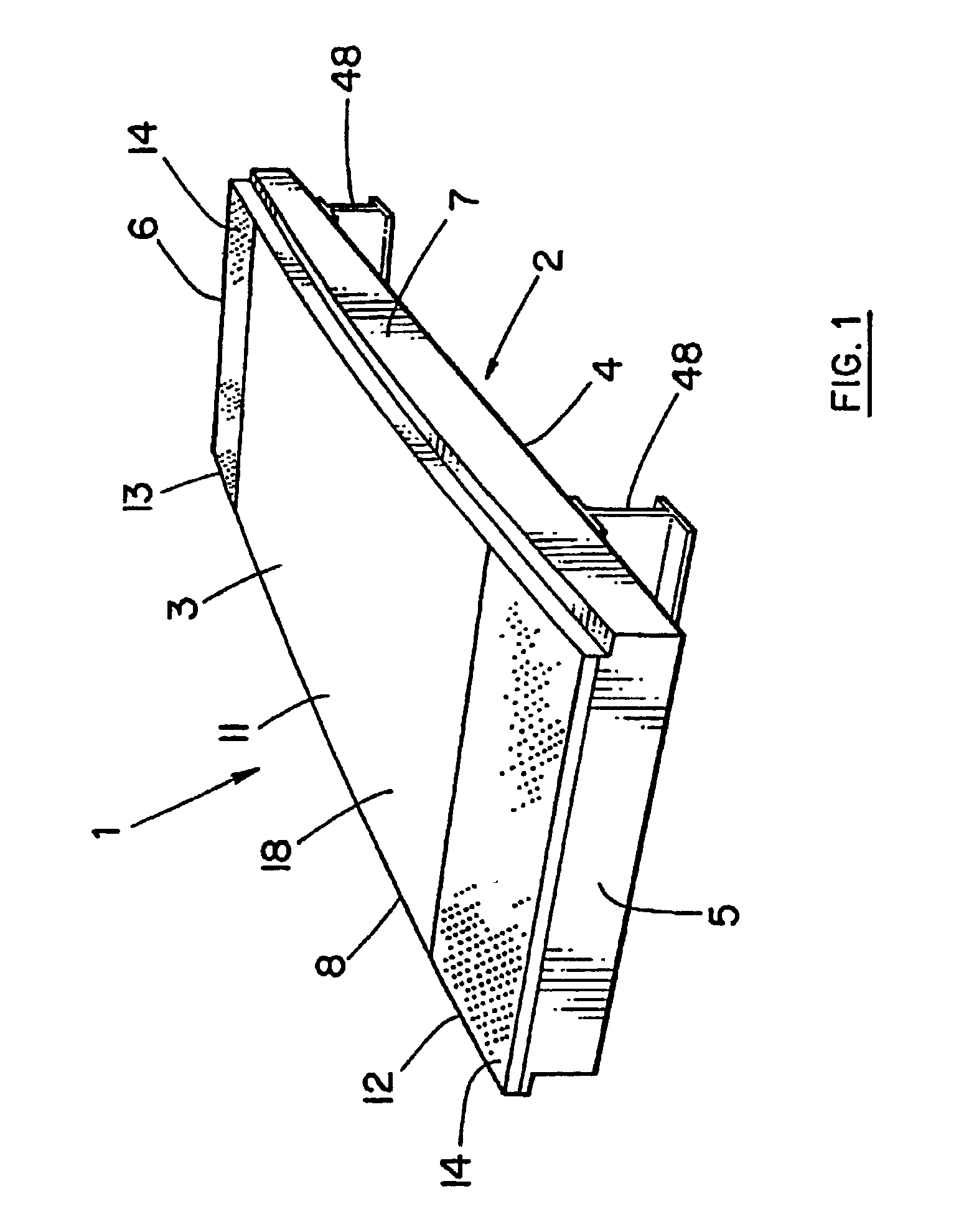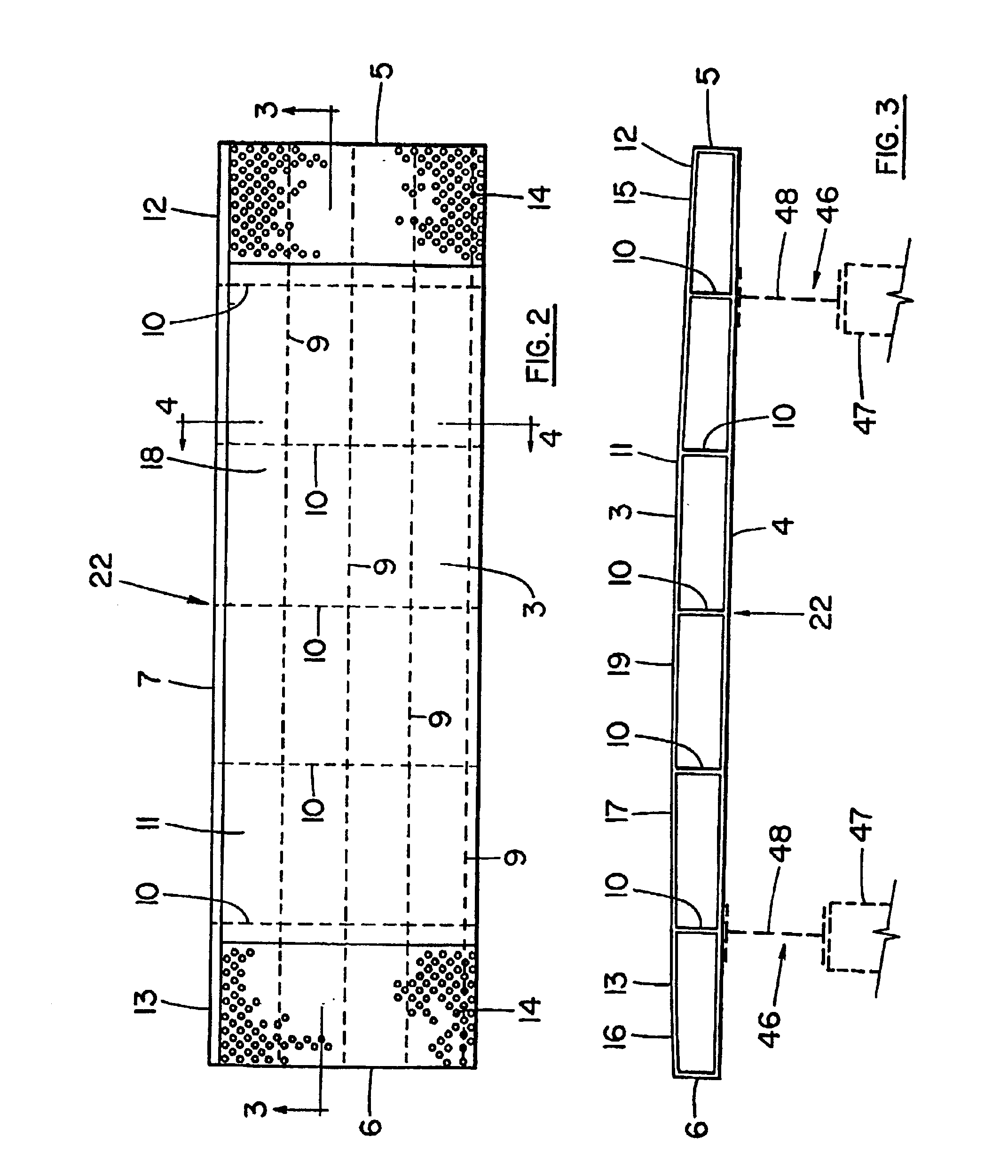Transit boarding platform panel
a technology for transit platforms and panels, applied in the direction of paving details, construction, ways, etc., can solve the problems of corroding elements, steel and concrete are also susceptible to corrosive elements, and the replacement process is complicated, so as to prevent standing water pools and facilitate the runoff of precipitation.
- Summary
- Abstract
- Description
- Claims
- Application Information
AI Technical Summary
Benefits of technology
Problems solved by technology
Method used
Image
Examples
Embodiment Construction
[0032]Referring to FIGS. 1 to 4 a preferred embodiment of transit boarding platform panel according to the present invention is generally indicated at 1. In the preferred embodiment illustrated the panel 1 comprises a base portion 2 formed from a reinforced composite polymer. The base portion 2 has top deck 3 and bottom plate 4, a first end 5, a second end 6, a first side 7 and second side 8. Between the top deck 3 and bottom plate 4 are a series of internal longitudinal and cross support members 9 and 10 respectively.
[0033]The top deck 3 has a central section 11 and end sections 12 and 13. Detectable warning tiles 14 are mounted to the top surfaces 15 and 16 of end sections 12 and 13. The top surface 17 of the central section 11 has a slip resistant coating 18 applied to it. In the preferred embodiment the slip resistant coating 18 consists of a non-slip monolithic walking surface. The slip resistant coating should be resistant to the effects of ultraviolet radiation, temperature c...
PUM
 Login to View More
Login to View More Abstract
Description
Claims
Application Information
 Login to View More
Login to View More - R&D
- Intellectual Property
- Life Sciences
- Materials
- Tech Scout
- Unparalleled Data Quality
- Higher Quality Content
- 60% Fewer Hallucinations
Browse by: Latest US Patents, China's latest patents, Technical Efficacy Thesaurus, Application Domain, Technology Topic, Popular Technical Reports.
© 2025 PatSnap. All rights reserved.Legal|Privacy policy|Modern Slavery Act Transparency Statement|Sitemap|About US| Contact US: help@patsnap.com



